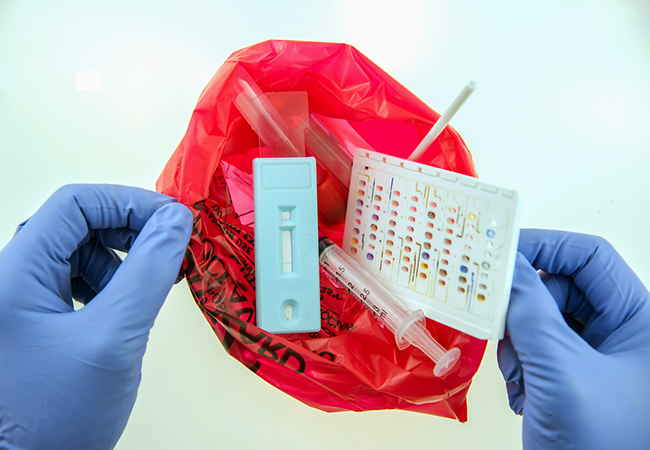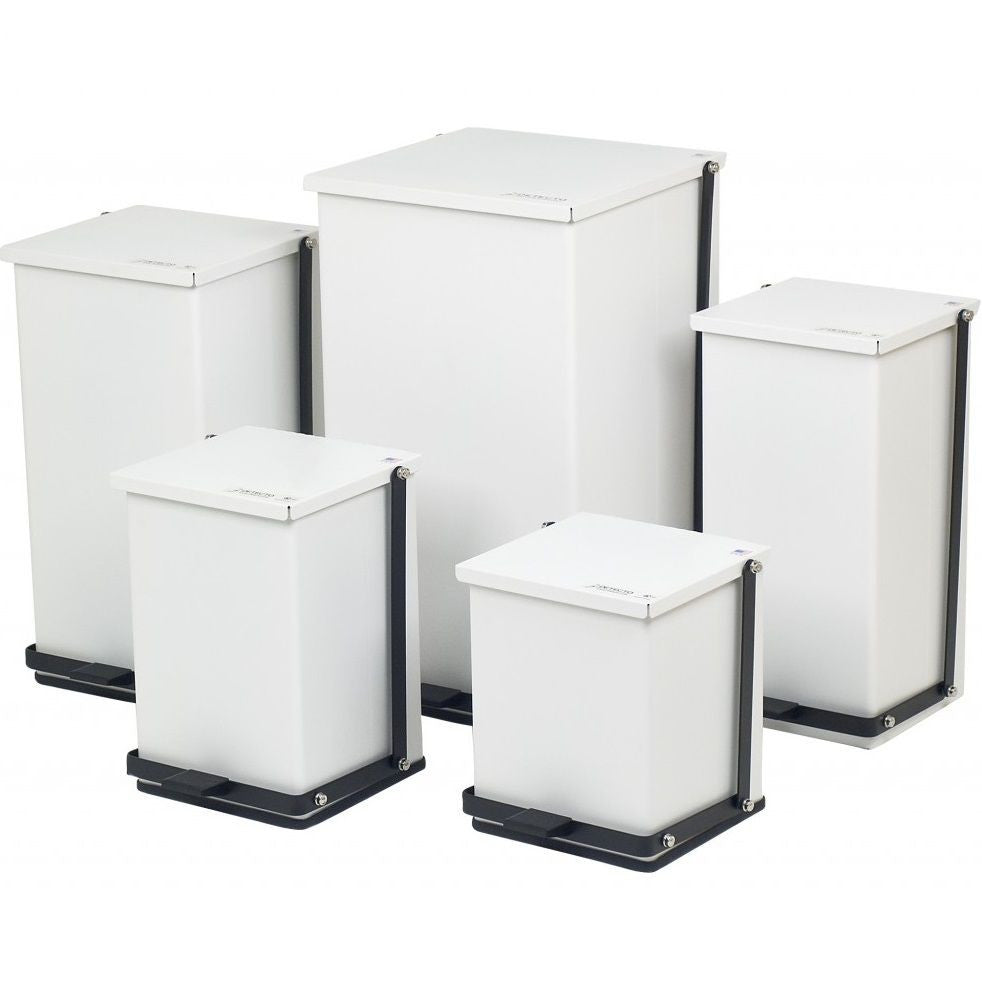Safeguarding Health: Introducing the Significance of Professional Medical Waste Removal
Safeguarding Health: Introducing the Significance of Professional Medical Waste Removal
Blog Article
The Significance of Appropriate Clinical Garbage Disposal: An Overview for Health Care Facilities
Proper medical waste disposal is an important element of health care center administration, ensuring the safety and wellness of clients, personnel, and the atmosphere. From comprehending the different categories of clinical waste to conforming with governing needs, health care centers need to take on effective waste partition techniques and select appropriate disposal approaches. The value of appropriate clinical waste disposal goes past simple conformity; it is an obligation that needs ongoing training and education and learning for team. In this guide, we will check out the various aspects of clinical waste disposal and highlight the vital actions that healthcare facilities should take. By carrying out these practices, healthcare facilities can minimize threats, protect public health and wellness, and contribute to a cleaner, much safer environment.
Recognizing Clinical Waste Categories
Comprehending clinical waste classifications is important for proper disposal in healthcare centers. Clinical waste is a broad term that encompasses various kinds of waste generated in health care setups, such as labs, centers, and medical facilities. Categorizing medical waste helps make certain that it is taken care of, kept, and disposed of safely and according to appropriate policies.
There are several groups of medical waste that healthcare facilities need to be knowledgeable about. These groups consist of infectious waste, sharps waste, pharmaceutical waste, chemical waste, and contaminated waste (medical waste disposal services with WasteX). Each group has details features and calls for various disposal techniques to minimize the danger of injury to healthcare workers, patients, and the atmosphere
Infectious waste, as an example, describes waste contaminated with potentially infectious materials, such as blood, body fluids, and tissues. Sharps waste consists of needles, syringes, and various other sharp things that can cause injury or transmit infections. Pharmaceutical waste consists of run out or unused medications, while chemical waste contains hazardous chemicals utilized in medical treatments. Last but not least, contaminated waste consists of materials infected with contaminated materials, such as nuclear medication products.
Conformity With Regulatory Requirements
Medical care centers need to make sure conformity with regulatory requirements for appropriate clinical garbage disposal. Governing bodies, such as the Environmental Defense Agency (EPA) and the Occupational Safety And Security and Wellness Management (OSHA), have actually developed laws and standards to guard public health and wellness and the environment. These guidelines detail the correct handling, storage, transport, and disposal of clinical waste.
Conformity with regulatory requirements is essential for medical care centers to stay clear of lawful charges, reputational damage, and prospective injury to human wellness and the atmosphere. Failure to follow these policies can lead to penalties, suits, and even the suspension or abrogation of running licenses.
To make certain conformity, medical care centers ought to establish comprehensive waste management programs that consist of team training, correct waste segregation, and the use of proper containers and tags. Routine audits and inspections must additionally be conducted to recognize any non-compliance problems and address them quickly.
It is necessary for healthcare centers to remain up to day with changes in regulations and update their waste management methods accordingly. This can be attained by actively keeping track of updates from regulatory bodies and taking part in training programs and workshops.
Executing Efficient Waste Partition Practices
To guarantee proper clinical waste disposal, health care centers have to apply reliable waste segregation methods. Waste partition is an essential step in the general waste management process, as it helps decrease the risk of infection, avoids cross-contamination, and makes certain the secure disposal of various sorts of waste. Effective waste segregation methods entail separating clinical waste right into various groups based on its attributes and possible threats.
One typical technique is the segregation of sharps waste, such as scalpels and needles, from various other sorts of medical waste. Sharps waste ought to be put in puncture-resistant containers to stop injuries and possible infections. Additionally, contaminated materials, such as pharmaceuticals and chemicals, ought to be separated from basic medical waste to avoid ecological contamination.
Proper labeling and color-coding of waste containers are crucial for effective waste segregation. Noticeable and clear labels should be positioned on each container to indicate the kind of waste it consists of and any kind of special handling needs - medical waste disposal services with WasteX. Additionally, color-coding can be made use of to differentiate in between different waste classifications, making it simpler for health care team to get rid of and identify of waste correctly
Regular training and education and learning for healthcare staff is essential for the successful application of waste segregation methods. Personnel members should be informed on the various waste groups, correct segregation methods, and the relevance of following waste management procedures. This will certainly help guarantee compliance and consistency in waste segregation methods throughout the facility.
Deciding On Appropriate Disposal Approaches
Correct choice of suitable disposal methods is important in ensuring the safe and environmentally accountable monitoring of medical waste in medical care centers. Medical care centers generate a variety of clinical waste, including sharps, transmittable waste, pharmaceutical waste, and chemical waste - medical waste his comment is here removal service. Each type of waste requires details disposal techniques to decrease the danger of contamination, injury, and environmental harm
One usual disposal method for medical waste is incineration. Incineration entails the regulated burning of waste at high temperatures.

Chemical sanitation is one more technique Read Full Article utilized for specific kinds of medical waste, such as pharmaceutical waste. This technique makes use of chemicals to counteract or destroy contaminants. It is crucial to select chemicals that are eco friendly and risk-free.
Sometimes, land fill disposal may be suitable for non-hazardous clinical waste (medical waste disposal services with WasteX). Correct segregation and packaging are vital to stop leak or contamination.
Eventually, health care centers should thoroughly assess the characteristics of their medical waste and pick suitable disposal techniques that prioritize safety, environmental management, and governing conformity. Regular training and surveillance are important to ensure that healthcare team follows appropriate disposal methods.

Training and Educating Team on Proper Disposal Treatments
Staff education and learning and training play a vital duty in ensuring the correct disposal of clinical waste in health care facilities. It is essential that all team member, including physicians, registered nurses, specialists, and assistance staff, receive thorough training on appropriate disposal procedures. This training must cover the different types of medical waste, their possible hazards, and the appropriate techniques for handling, segregating, and throwing away them.
One of the primary goals of staff education and training is to guarantee that all medical care professionals recognize the importance of correct disposal procedures and the possible repercussions of inappropriate waste management. They require to be knowledgeable about the threats connected with clinical waste, such as the transmission of infections and the contamination of the setting. medical waste removal service. By understanding these dangers, team members will be more motivated to adhere to correct disposal protocols and take the needed preventative measures to safeguard themselves, their colleagues, and the area
Training need to additionally cover making use of individual safety tools (PPE) and the appropriate methods for managing clinical waste. Employee ought to be enlightened on exactly how to recognize and set apart different sorts of waste, such as sharps, transmittable waste, and unsafe chemicals. They need to also be trained on the appropriate use of waste containers, such as sharps containers and biohazard bags, along with the value of labeling and sealing these containers properly.
Additionally, team education and training must include normal updates and correspondence course to make sure that health care professionals remain notified regarding the most up to date laws and ideal methods in clinical waste disposal. This recurring education is vital to maintain a high level of awareness and conformity among employee.
Verdict
In final thought, proper clinical waste disposal is of utmost importance for health care centers. Recognizing the various categories of medical waste and complying with regulative demands ensures the safety and health of both healthcare employees and the basic public.
From comprehending the various groups of medical waste to conforming with regulatory needs, health care centers should adopt efficient waste partition methods and pick proper disposal techniques. These groups consist of go to my site transmittable waste, sharps waste, pharmaceutical waste, chemical waste, and contaminated waste.To guarantee appropriate clinical waste disposal, health care facilities have to implement effective waste segregation practices. Waste segregation is a crucial step in the general waste management procedure, as it aids minimize the danger of infection, prevents cross-contamination, and makes certain the secure disposal of various types of waste. Health care facilities produce a variety of clinical waste, consisting of sharps, infectious waste, pharmaceutical waste, and chemical waste.
Report this page